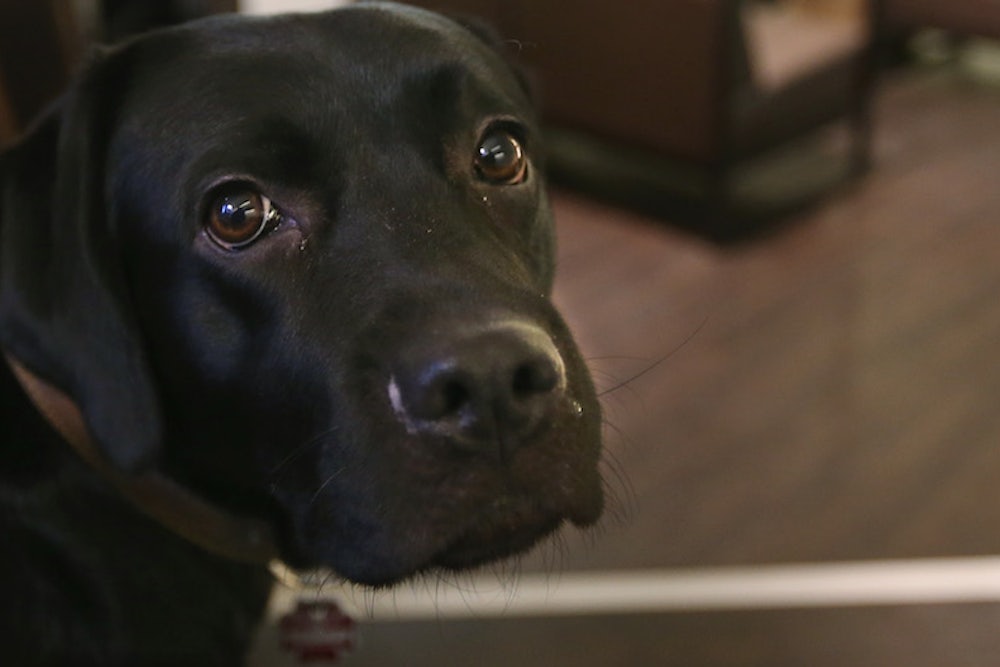Veterinary biologists have discovered that a sexually-transmitted cancer found in dogs around the world first originated 11,000 years ago, making it potentially the oldest living mammalian creature.
The study from the Wellcome Trust’s Sanger Institute, published in Science, analysed the genome of canine transmissable venereal tumours (CTVT), a disease that is one of only two known cancers of its type to have been observed in the natural world (the other, transferred via bites, affecting Tasmanian devils). It’s not a cancer caused by the transfer of a virus, like with cervical cancer and the HPV virus in humans—it’s the transfer of actual cancerous dog cells from dog to dog.
“They are actually a parasite, they need to have their host in order to survive, but they’re actually derived from the same species as their host,” Dr Elizabeth Murchison, the study’s lead author, explained to me. “They’re quite a strange disease. They are an infectious disease, but they’re originally from the same species as their host, which makes them a kind of very tricky to combat.”
“It’s the oldest continually surviving mammalian lifeform that we know of,” she said. “It is almost immortal.”
Genome analysis of samples from a dog in Brazil and another Australia found that the cancer had undergone a huge number of mutations, in the order of two million, since it first began metastasising within the first dog to contract it.
Murchison said: “Between humans we each have about three million mutations, the natural variance that makes us different to other people. Similarly dogs have about three million natural variants that make one dog different to another dog. But cancers themselves, in humans, don’t tend to differ from their host very much. They usually have between 1,000 and 5,000 mutations in the genome that makes the cancer different to the host. Whereas this dog cancer has acquired about two million, which is almost making it like a different individual to the original host that gave rise to it.”
Relying on recent research which found that, within cancer patients, the number of mutations within a cancer correlates both to the type of cancer and the age of the patient, the study team were able to trace back in time to the point at which mutations must have started - giving the age of CTVT at 11,000 years.
Yet CTVT stayed within the small population where it first emerged for roughly 10,500 years, until suddenly spreading elsewhere around the globe - a time that coincides with the beginnings of the European age of exploration. While there’s no way to know where in the world the cancer first appear (yet), the earliest known historical mention of it is by a London doctor in 1810.
With the information from the origin dog’s genome, the team was able to create an image of what it probably looked like. Here's a video from the team further explaining their work:
What’s more, the cancer appears to have been caused by in-breeding.
“It was a relatively inbred individual,” explains Murchison. “Similarly, the Tasmanian devils are relatively inbred population—they live on an island, and they have a small population. The cancer might have originated in a dog that lived in an in-bred population, but from there it managed to adapt into all sorts of out-bred dogs. It can even survive in other species of canids, including jackals and coyotes and foxes. It’s pretty remarkable.”
Theoretically, this type of cancer could emerge at any time in any species, Murchison pointed out, but the experience of the dog and Tasmanian devil transmissible cancers— and from a third variant, which emerged briefly in a population of laboratory hamsters in the 1960s—seems to indicate that in-bred populations are more at risk. There are human populations which suffer from low genetic diversity around the world, and this research could be important in understanding transmissible cancers in the case of a variant appearing.
“These cancers have to overcome one of the most fundamental immunological barriers, and how they do it is still a mystery,” Murchison said. “It’s incredibly important to understand how they do it, as it has implications for how cancers evade the immune system, but also potentially how other infectious diseases might work, and have implications for how to design better methods for helping transplant recipient patients not to reject their graft transplant organs.”
Murchison is also keen to see if further research could help the endangered Tasmanian devil, whose variant is much more aggressive than CTVT and which can kill its host in a matter of months.
This piece first appeared on newstatesman.com.
